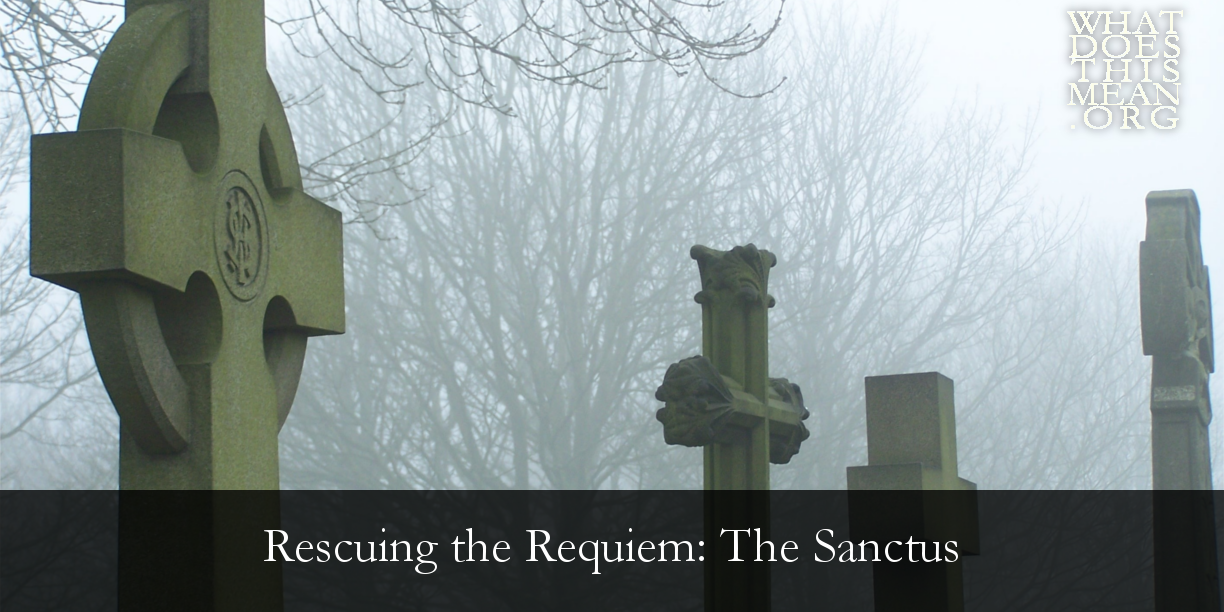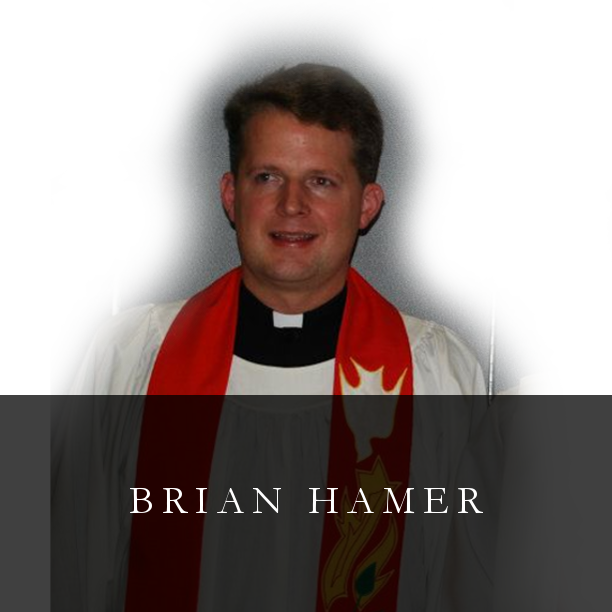| Gabriel Fauré, Requiem, Op. 48 | Maurice Duruflé, Requiem, Op. 9 |
Help us, good Lord. +
Now listen to the Sanctus of Fauré and think about the angelic hymn of Revelation 4 and 5 as the saints gather around the throne of the Lamb. Perhaps you will agree with the composer, who thought the solo violin sounded particularly angelic?
| Sanctus, sanctus, sanctus Dominus Deus Sabaoth. Pleni sunt coeli et terra gloria tua. Hosanna in excelsis. | Holy, holy, holy Lord God of Sabaoth. Heaven and earth are full of Your glory. Hosanna in the highest. |
Often mentioned in the same breath with the Requiem of Gabriel Fauré is the Requiem of Maurice Duruflé. Both texts omit the “Day of Wrath” movement. Both texts end with the “In Paradise” movement, drawn from the committal service. And both settings are accessible for a small ensemble (choir, organ, and soloists), a chamber ensemble (add a few instruments), and for full orchestra and chorus.
In contrast to Fauré, however, who wrote his own melodies, Maurice Duruflé used pre-existent plain chant melodies as the foundation of each movement, with the exception of the Pie Jesu Domine (“O Merciful Lord Jesus”). Listen to the plain chant Sanctus from one setting of the Mass for the Dead which inspired his setting for choir and instruments:
| Sanctus, sanctus, sanctus Dominus Deus Sabaoth. Pleni sunt coeli et terra gloria tua. Hosanna in excelsis. Benedictus qui venit In nomine Domini. Hosanna in excelsis. | Holy, holy, holy Lord God of Sabaoth. Heaven and earth are full of Your glory. Hosanna in the highest. Blessed is he who comes In the name of the Lord. Hosanna in the highest. |
The organ opens with a sextuple rhythm, which continues through most of the movement and might represent the six-winged Seraphim of Isaiah 6. The choral voicing is also divided into six-parts (SSATTB), except at the climactic point, where another voice is added. The dynamics are generally subdued, as if one is standing with Isaiah in awe of the Lord’s presence. The altos first introduce the Hosanna (“Save us now!”) at 1:28 in this video, which begins a gradual swell to the climactic moment (1:54 in this video) at the words, “Hosanna in the highest,” complimented by each voice singing its highest note, both within this movement and within the laws of physics (high B-flats for Soprano I and Tenor I, for eight counts at triple forte!). A short Benedictus ends the movement, heralding the One who comes to the grieving with the word of life, salvation, and resurrection from the dead. Readers who take the time to explore Duruflé’s complete Requiem might agree with the assessment of Nick Jones, who wrote the following in the liner notes for the 1987 Robert Shaw recording: “The Requiem is Duruflé’s greatest and best known work, a testament of faith, comfort, and tranquility all but unequaled among the music written in this troubled century” (Telarc CD-80135 liner notes, p. 5).
I mentioned earlier in this column that Fauré made several textual adjustments to his Requiem, including the omission of the famous “Day of Wrath” sequence (a playground for his fellow romantic composers), and the inclusion of the “In Paradise” text, which was actually part of the committal service at the time. The result for both settings of the Requiem explored in this column (Duruflé followed a similar practice in arranging his text) is that the word “requiem” (rest) is the first and last word of each work:
| Rest eternal grant them, O Lord, and may perpetual light shine on them . . . may the chorus of angels receive you, and with Lazarus, once a begger, eternally may you have rest. |




 RSS Feed
RSS Feed
